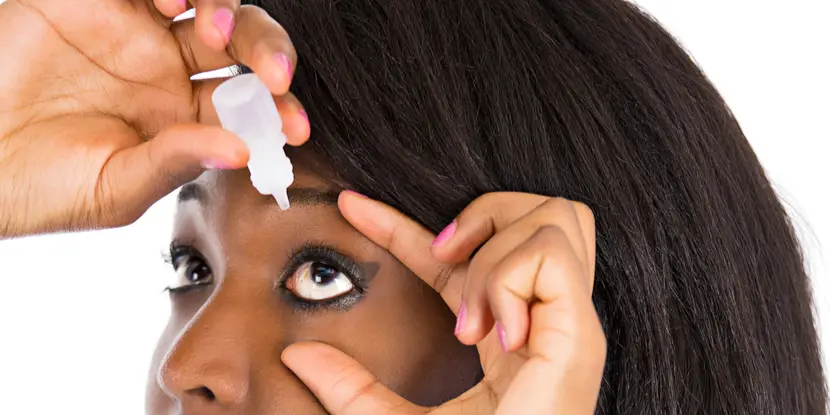[Kinh Nghiệm Mua Thuốc Nhỏ Mắt Tại Hiệu Thuốc ở Nhật Bản, Từ Vựng Tiếng Nhật Cần Biết]

Buying eye drops in Japan can be a daunting task, especially if you don’t speak Japanese. With a wide variety of options available, it’s crucial to understand the different types of eye drops and their uses. This guide will help you navigate the world of Japanese eye drops, equipping you with the necessary vocabulary and tips for finding the right product.

Understanding Japanese Eye Drop Terminology

To effectively communicate your needs at a Japanese pharmacy, it’s essential to know some basic Japanese terms related to eye drops. Understanding these terms will help you explain your eye condition and choose the right product. Here’s a glossary of important vocabulary:
- 目薬 (me-yaku): Eye drops
- ドライアイ (dorai-ai): Dry eye
- 結膜炎 (ketsumakuen): Conjunctivitis
- アレルギー (arerugī): Allergy
- 充血 (jūketsu): Bloodshot eyes
- 目の疲れ (me no tsukare): Eye fatigue
- 点眼 (tengan): Instillation (of eye drops)
- 回数 (kaisu): Frequency (of application)
- 一日 (ichi-nichi): One day
- 一回 (ikkai): Once
- 二回 (ni-kai): Twice
- 三回 (san-kai): Three times
- 四回 (yon-kai): Four times
- 五回 (go-kai): Five times
Choosing the Right Eye Drops
Navigating the vast array of eye drops available in Japanese pharmacies can be overwhelming. Understanding the different types of eye drops and their functions will help you make an informed decision.
- Artificial Tears (人工涙液, jinkō ruieki): These drops replenish the natural tear film, relieving dryness and irritation. They are often recommended for dry eye, contact lens wearers, and individuals experiencing eye fatigue.
- Anti-inflammatory Eye Drops (抗炎症点眼薬, kō-enjō tengan-yaku): These drops reduce inflammation and redness caused by various conditions, including conjunctivitis, allergies, and eye infections.
- Anti-allergic Eye Drops (抗アレルギー点眼薬, kō-arerugī tengan-yaku): These drops target the symptoms of eye allergies, like itching, redness, and watery eyes.
- Anti-bacterial Eye Drops (抗菌点眼薬, kōkin tengan-yaku): These drops combat bacterial infections of the eye, often prescribed for conjunctivitis caused by bacteria.
Understanding Eye Drop Labels
Japanese eye drop labels are packed with information. Learning to decipher them will empower you to select the right product for your needs.
- 成分 (seibun): Ingredients
- 効能・効果 (kōnō・kōka): Efficacy/Indications
- 用法・用量 (yōhō・yōryō): Usage and dosage
- 保管方法 (hokan hōhō): Storage method
- 使用上の注意 (shiyōjō no chūi): Precautions
- 製造販売元 (seizō hanbai-moto): Manufacturer and distributor
Navigating Japanese Pharmacies
Japanese pharmacies are typically well-stocked with a wide range of eye drops. Here are some tips for a smooth shopping experience:
- Be prepared with a list of symptoms and questions.
- Point to the eye area and use simple phrases like “me no tsukare” (eye fatigue) or “me ga akarui” (bloodshot eyes).
- If you’re unsure about a product, ask the pharmacist for assistance.
- Pharmacists in Japan are generally knowledgeable and helpful, and they are happy to assist you with finding the right eye drops.
Finding Eye Drops for Specific Conditions
Different eye conditions require specific types of eye drops. Here’s a breakdown of popular eye conditions and suitable eye drop options:
Dry Eyes
- 人工涙液 (jinkō ruieki): Artificial tears provide temporary relief from dryness and irritation.
- ヒアルロン酸 (hiaruron-san): Hyaluronic acid-based eye drops are highly moisturizing and effective for dry eyes.
- 目薬 (me-yaku): Look for eye drops with moisturizing ingredients like hyaluronic acid or glycerin.
Allergies
- 抗アレルギー点眼薬 (kō-arerugī tengan-yaku): These eye drops target allergic symptoms like itching, redness, and watery eyes.
- クロモグリク酸ナトリウム (kuromogurikusan natrium): This ingredient is commonly found in anti-allergic eye drops.
- ケミカルフリー (kemikaru-furī): Look for eye drops that are free of preservatives or other chemicals that might irritate sensitive eyes.
Conjunctivitis
- 抗炎症点眼薬 (kō-enjō tengan-yaku): Anti-inflammatory eye drops are effective for reducing inflammation and redness caused by conjunctivitis.
- 抗菌点眼薬 (kōkin tengan-yaku): If your conjunctivitis is caused by bacteria, antibiotic eye drops are necessary.
- ステロイド (suteroido): Steroid eye drops may be prescribed for severe cases of conjunctivitis, but they should only be used under the guidance of a doctor.
Conclusion
Navigating Japanese pharmacies and choosing the right eye drops can be a rewarding experience with a little preparation and knowledge. By understanding the essential Japanese terms and learning to decipher eye drop labels, you’ll be well-equipped to find the perfect eye drops for your needs. Remember to communicate your symptoms clearly and don’t hesitate to ask for assistance from the friendly and knowledgeable pharmacists. With the right information and a little effort, you’ll be able to enjoy clear and comfortable vision while exploring the wonders of Japan.
Keyword Tags
- Japanese Eye Drops
- Eye Drop Terminology
- Choosing Eye Drops
- Eye Drop Labels
- Japanese Pharmacies
- Dry Eyes
- Allergies
- Conjunctivitis
